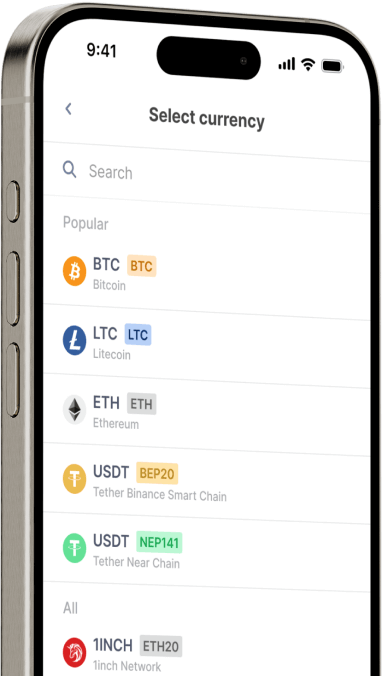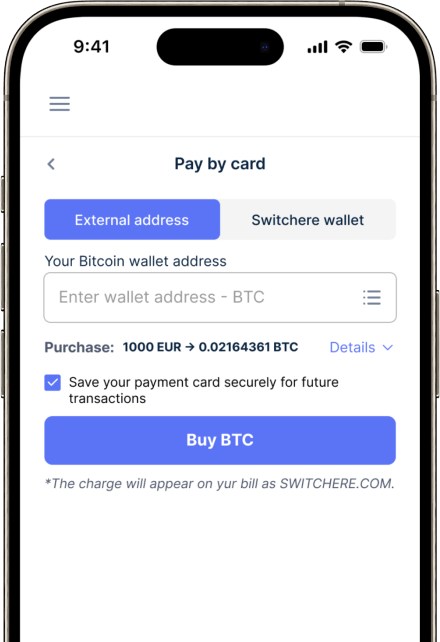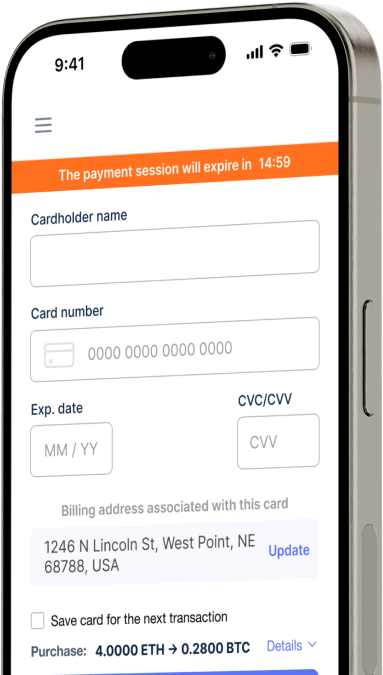Convert
United Arab Emirates dirham (AED) to Cartesi (CTSI) Instantly
Purchase Cartesi (CTSI) with United Arab Emirates dirham (AED) easily at Switchere and benefit from fast, secure transactions.
About
Cartesi (CTSI)
Cartesi (CTSI) is a Layer-2 infrastructure platform designed to resolve the critical issue of computational scalability and high costs on blockchain networks. Often referred to as "The Blockchain OS," its primary objective is to enable decentralized applications (dApps) with complexities that rival their centralized Web2 counterparts. Cartesi achieves this by allowing developers to build smart contracts and dApps within a full Linux operating system environment, utilizing mainstream programming languages and software stacks. This approach significantly lowers the barrier to entry for developers transitioning from Web2 to Web3, fostering a richer and more powerful dApp ecosystem built on robust blockchain technology.
The core of the platform is the Cartesi Machine (CM), a deterministic virtual machine that executes intensive computations off-chain. By leveraging Optimistic Rollups, Cartesi can process these complex calculations externally while anchoring the results with cryptographic security on the underlying Layer-1 blockchain, such as Ethereum. This hybrid model provides the immense computational power of off-chain processing with the verifiable trust of an on-chain digital ledger. The native utility token, CTSI, is integral to the network's tokenomics. It is used for staking within Cartesi's Noether Proof-of-Stake (PoS) sidechain, where node runners help secure the network and earn rewards. CTSI also functions as the payment method for computation and data availability services within the ecosystem.
Buy Other 150+ Cryptocurrencies for United Arab Emirates dirham (AED)
Other Coins for United Arab Emirates dirham (AED)
-
AED to ZRX
-
AED to 1INCH
-
AED to AAVE
-
AED to ACH
-
AED to ALGO
-
AED to TLM
-
AED to ANKR
-
AED to APE
-
AED to NFT
-
AED to API3
-
AED to APT
-
AED to ARPA
-
AED to AUDIO
-
AED to AVAX
-
AED to AVAX
-
AED to AXS
-
AED to BADGER
-
AED to BAL
-
AED to BNT
-
AED to BAT
-
AED to BNB
-
AED to BSW
-
AED to BSV
-
AED to BLUR
-
AED to BONE
-
AED to CTSI
-
AED to CELR
-
AED to CELO
-
AED to CEL
-
AED to LINK
-
AED to CHZ
-
AED to CHR
-
AED to C98
-
AED to COMP
-
AED to CFX
-
AED to PEOPLE
-
AED to CVX
-
AED to ATOM
-
AED to CTC
-
AED to CRV
-
AED to DAI
-
AED to DASH
-
AED to MANA
-
AED to DENT
-
AED to DGB
-
AED to DYDX
-
AED to XEC
-
AED to EOS
-
AED to ETC
-
AED to ENS
-
AED to ETHW
-
AED to FET
-
AED to FIL
-
AED to FLOKI
-
AED to GALA
-
AED to GNO
-
AED to ONE
-
AED to HBAR
-
AED to HOT
-
AED to HOOK
-
AED to ICX
-
AED to ILV
-
AED to IMX
-
AED to INJ
-
AED to ICP
-
AED to IOST
-
AED to IOTX
-
AED to JASMY
-
AED to JST
-
AED to KAVA
-
AED to KCS
-
AED to KSM
-
AED to KNC
-
AED to LDO
-
AED to LQTY
-
AED to LPT
-
AED to LOOKS
-
AED to LRC
-
AED to LUNA
-
AED to MKR
-
AED to MASK
-
AED to EGLD
-
AED to ALICE
-
AED to NEAR
-
AED to XEM
-
AED to NEXO
-
AED to NOT
-
AED to NMR
-
AED to OKB
-
AED to OMG
-
AED to ONT
-
AED to EDU
-
AED to OP
-
AED to OGN
-
AED to CAKE
-
AED to PAXG
-
AED to PENDLE
-
AED to DOT
-
AED to POL
-
AED to QTUM
-
AED to QNT
-
AED to RDNT
-
AED to XRD
-
AED to RVN
-
AED to REN
-
AED to RSR
-
AED to RLC
-
AED to RPL
-
AED to SFP
-
AED to SHIB
-
AED to SKL
-
AED to SXP
-
AED to STND
-
AED to STG
-
AED to XLM
-
AED to GMT
-
AED to STORJ
-
AED to STMX
-
AED to SUSHI
-
AED to SNX
-
AED to USDT (Polygon)
-
AED to USDT (AVAC)
-
AED to USDT (BEP20)
-
AED to USDT (ERC20)
-
AED to USDT (SPL)
-
AED to USDT (NEP141)
-
AED to USDT (FA2)
-
AED to USDT (TRC20)
-
AED to USDT (JETTON)
-
AED to XTZ
-
AED to GRT
-
AED to SAND
-
AED to TFUEL
-
AED to THETA
-
AED to RUNE
-
AED to TON
-
AED to TUSD (BEP20)
-
AED to TUSD (TRC20)
-
AED to TWT
-
AED to UOS
-
AED to UMA
-
AED to UNI
-
AED to USDC (Polygon)
-
AED to USDC (SPL)
-
AED to USDC (OP)
-
AED to USDC (BEP20)
-
AED to USDC (AVAC)
-
AED to USDC (ARB)
-
AED to USDC (ERC20)
-
AED to VET
-
AED to VRA
-
AED to WAXP
-
AED to WOO
-
AED to WLD
-
AED to WBTC
-
AED to WMINIMA
-
AED to XDC
-
AED to YFI
-
AED to YGG
-
AED to ZIL
How to Buy Cartesi (CTSI)
Frequently Asked Questions
-
What does the AED/CTSI trading pair represent in the digital asset market?
The AED/CTSI pair represents a direct fiat on-ramp for purchasing Cartesi (CTSI) tokens using the United Arab Emirates Dirham (AED). It's significant for developers and investors in the UAE, allowing them to acquire a stake in 'The Blockchain OS,' a Layer-2 platform enabling complex dApp development using a Linux environment, directly with their local currency through a regulated cryptocurrency exchange.
-
What technical advantages does Cartesi's 'Blockchain OS' offer developers using CTSI?
Cartesi's 'The Blockchain OS' provides a major advantage by allowing developers to build decentralized applications (dApps) using mainstream software stacks and libraries within a true Linux environment. This Layer-2 scaling solution utilizes Optimistic Rollups for off-chain computation, enabling dApps to perform complex calculations at a fraction of the cost of on-chain processing, significantly lowering barriers for developers.
-
Are there regulatory considerations, like from VARA, when trading AED for CTSI?
Yes, when performing any digital asset purchase with AED in the UAE, it's crucial to be aware of the local regulatory framework. The Virtual Assets Regulatory Authority (VARA) in Dubai, and other federal bodies, set the rules. To ensure secure trading and KYC/AML compliance, always use a licensed and regulated fiat gateway or cryptocurrency exchange that explicitly adheres to these UAE-specific regulations.
-
What is the typical process for buying CTSI with AED on a cryptocurrency platform?
To buy CTSI with AED, you first need to select a regulated cryptocurrency exchange that supports this pair and complete the KYC/AML verification process. Next, you deposit AED into your exchange account, typically via a local UAE bank transfer. Once the funds are credited, navigate to the AED/CTSI order book, place a buy order for your desired amount, and upon execution, the CTSI tokens will be available in your digital wallet.
-
What are the primary utilities of the CTSI token after acquiring it with AED?
The CTSI token has several core utilities. Primarily, it's used for staking in Cartesi's Noether Proof-of-Stake (PoS) system, allowing holders to help secure the network and earn rewards. Additionally, CTSI serves as the native currency for paying transaction fees within the Cartesi sidechain, which is essential for developers running their dApps on the platform.
-
What are the best security practices for storing CTSI tokens after a blockchain transaction?
After acquiring CTSI, it is highly recommended to transfer them from the exchange to a personal digital wallet where you control the private keys. For maximum security, a hardware wallet is the gold standard for long-term digital asset storage. Always enable two-factor authentication (2FA) on your exchange account and be wary of phishing attempts to protect your assets both during and after the transaction.




